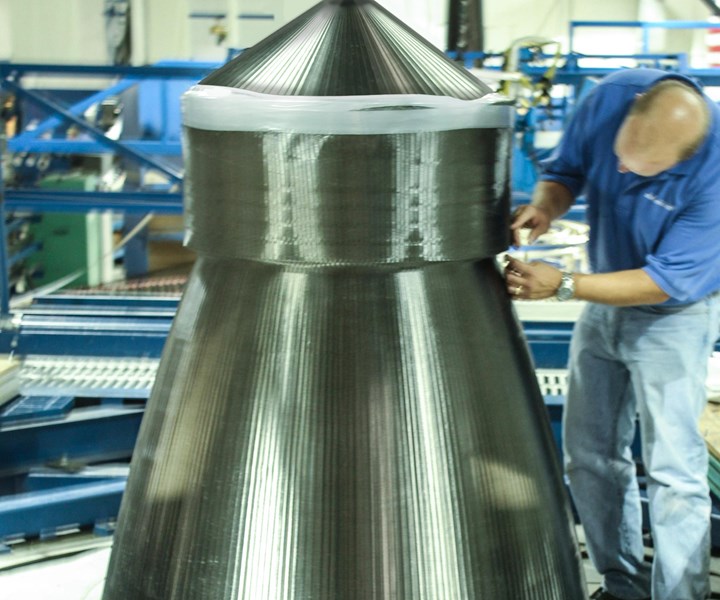A&P Technology launches 864-carrier braiding machine
The company says the latest addition to its Megabraider line tops its own record for world’s largest braiding machinery.
Share
Read Next

A&P's line of Megabraiders enables the manufacture of large structures such as this rocket nozzle preform, as well as the production of wide custom fabrics with optimized areal weights and architectures. Source | A&P Technology
A&P Technology Inc. (Cincinnati, Ohio) introduces an 864-carrier braiding machine to its line of Megabraiders, which the company says tops its own record for world’s largest braiding machinery. The 864-carrier braider was designed and built in response to an immediate need by one of A&P’s industrial customers. Like A&P’s other large braiders, the 864-carrier braider was built to provide an economical solution while meeting exact customer requirements. A&P’s Megabraider line now includes braiders ranging in size from 864-carrier braiders down to 160 carrier machines, with multiples of each size in between. The complete list of Megabraiders includes the following braider sizes: 864, 800, 700, 656, 600, 500, 400, 336, 300, 272, 232, 208, 192, 180, 176, 172 and 160.
In addition to the large braiders, A&P says its line of standard size braiders includes hundreds of machines in 24 sizes, built and run to provide optimal material solutions at affordable prices.
For more than 30 years, A&P has maintained a keen focus on braid and braiding, working with customers to design novel fiber architectures, and designing and building the machinery and processes to produce them. A&P Technology is a seventh-generation, family-owned manufacturer of braided reinforcements, operating out of six buildings in Cincinnati, Ohio with 174,500 square feet of manufacturing space. A&P produces braided sleevings, fabrics and preforms, offering customized products at affordable prices for military, aerospace, recreation, prosthetic, automotive and industrial applications.
Related Content
-
Composites manufacturing for general aviation aircraft
General aviation, certified and experimental, has increasingly embraced composites over the decades, a path further driven by leveraged innovation in materials and processes and the evolving AAM market.
-
The lessons behind OceanGate
Carbon fiber composites faced much criticism in the wake of the OceanGate submersible accident. CW’s publisher Jeff Sloan explains that it’s not that simple.
-
McLaren celebrates 10 years of the McLaren P1 hybrid hypercar
Lightweight carbon fiber construction, Formula 1-inspired aerodynamics and high-performance hybrid powertrain technologies hallmark this hybrid vehicle, serve as a springboard for new race cars.

.jpg;width=70;height=70;mode=crop)














